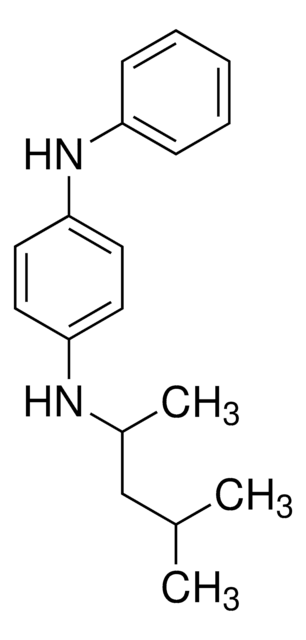B9934
BTA-1
≥98% (HPLC), solid
Sinónimos:
2-(4´-Methylaminophenyl)benzothiazole
Iniciar sesiónpara Ver la Fijación de precios por contrato y de la organización
About This Item
Fórmula empírica (notación de Hill):
C14H12N2S
Número de CAS:
Peso molecular:
240.32
MDL number:
UNSPSC Code:
12352200
PubChem Substance ID:
NACRES:
NA.77
Productos recomendados
assay
≥98% (HPLC)
form
solid
color
yellow
solubility
DMSO: soluble ~10 mg/mL
storage temp.
2-8°C
SMILES string
CNc1ccc(cc1)-c2nc3ccccc3s2
InChI
1S/C14H12N2S/c1-15-11-8-6-10(7-9-11)14-16-12-4-2-3-5-13(12)17-14/h2-9,15H,1H3
InChI key
FHJRKGXJBXPBGA-UHFFFAOYSA-N
Gene Information
human ... APP(351)
Categorías relacionadas
Biochem/physiol Actions
BTA-1 is a fluorescent thioflavin-T derivative with 50-fold higher affinity for β-amyloid aggregates.
BTA-1 is a probe for β-amyloid aggregates; fluorescent thioflavin-T derivative; exhibits high affinity for amyloid deposits; displays 50-fold higher affinity than thioflavin-T; selectively stains cerebral plaques and cerebrovascular amyloid deposits in the brains of PS1/APP transgenic mice, as well as Aβ fibrils in postmortem brain tissue obtained from AD patients; crosses the blood brain barrier.
Storage Class
11 - Combustible Solids
wgk_germany
WGK 3
flash_point_f
Not applicable
flash_point_c
Not applicable
ppe
Eyeshields, Gloves, type N95 (US)
Elija entre una de las versiones más recientes:
¿Ya tiene este producto?
Encuentre la documentación para los productos que ha comprado recientemente en la Biblioteca de documentos.
W E Klunk et al.
Life sciences, 69(13), 1471-1484 (2001-09-14)
In vivo assessment of the beta-sheet proteins deposited in amyloid plaques (A beta peptide) or neurofibrillary tangles (tau protein) presents a target for the development of biological markers for Alzheimer's disease (AD). In an effort to develop in vivo beta-sheet
Ruiqing Ni et al.
Journal of nuclear medicine : official publication, Society of Nuclear Medicine, 59(6), 960-966 (2018-02-09)
Fibrillary tau aggregates in Alzheimer disease and allied neurodegenerative disorders have been visualized in vivo by PET, whereas mechanistic links between PET-detectable tau deposits and neurotoxicity remain elusive. Here, we took advantage of transgenic mouse models of tauopathies to evaluate
Alex C Kwan et al.
Optics express, 17(5), 3679-3689 (2009-03-05)
Intrinsic optical emissions, such as autofluorescence and second harmonic generation (SHG), are potentially useful for functional fluorescence imaging and biomedical disease diagnosis for neurodegenerative diseases such as Alzheimer's disease (AD). Here, using multiphoton and SHG microscopy, we identified sources of
Chester A Mathis et al.
Bioorganic & medicinal chemistry letters, 12(3), 295-298 (2002-01-30)
The synthesis of a new lipophilic thioflavin-T analogue (2-[4' -(methylamino)phenyl]benzothiazole, 6) with high affinity for amyloid is reported. Intravenous injection of [(11)C]-labeled 6 in control mice resulted in high brain uptake. Amyloid deposits were imaged with multiphoton microscopy in the
William E Klunk et al.
The Journal of neuroscience : the official journal of the Society for Neuroscience, 23(6), 2086-2092 (2003-03-27)
2-(4'-methylaminophenyl)benzothiazole (BTA-1) is an uncharged derivative of thioflavin-T that has high affinity for Abeta fibrils and shows very good brain entry and clearance. In this study, we asked whether BTA-1, at concentrations typical of those achieved during positron emission tomography
Nuestro equipo de científicos tiene experiencia en todas las áreas de investigación: Ciencias de la vida, Ciencia de los materiales, Síntesis química, Cromatografía, Analítica y muchas otras.
Póngase en contacto con el Servicio técnico








